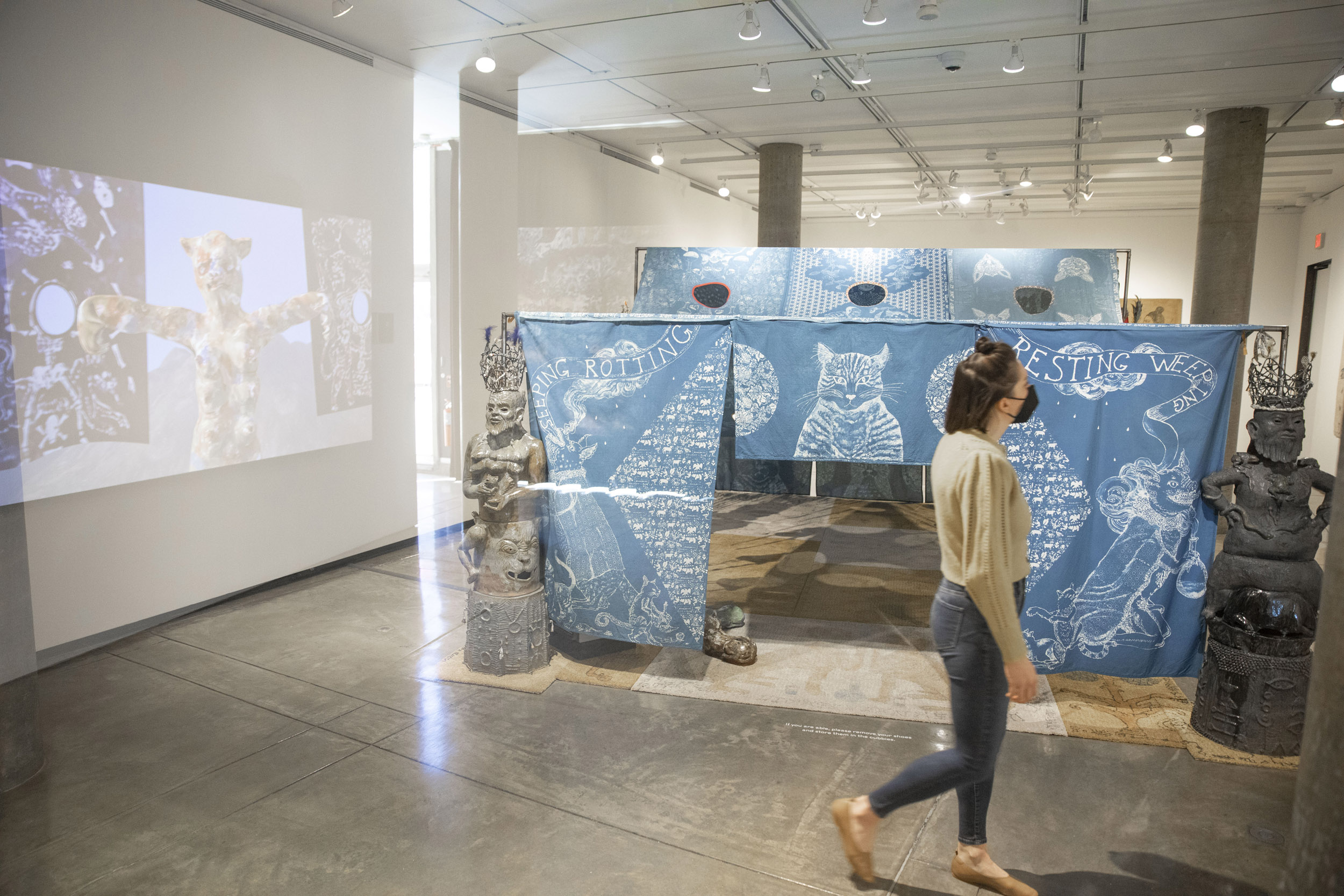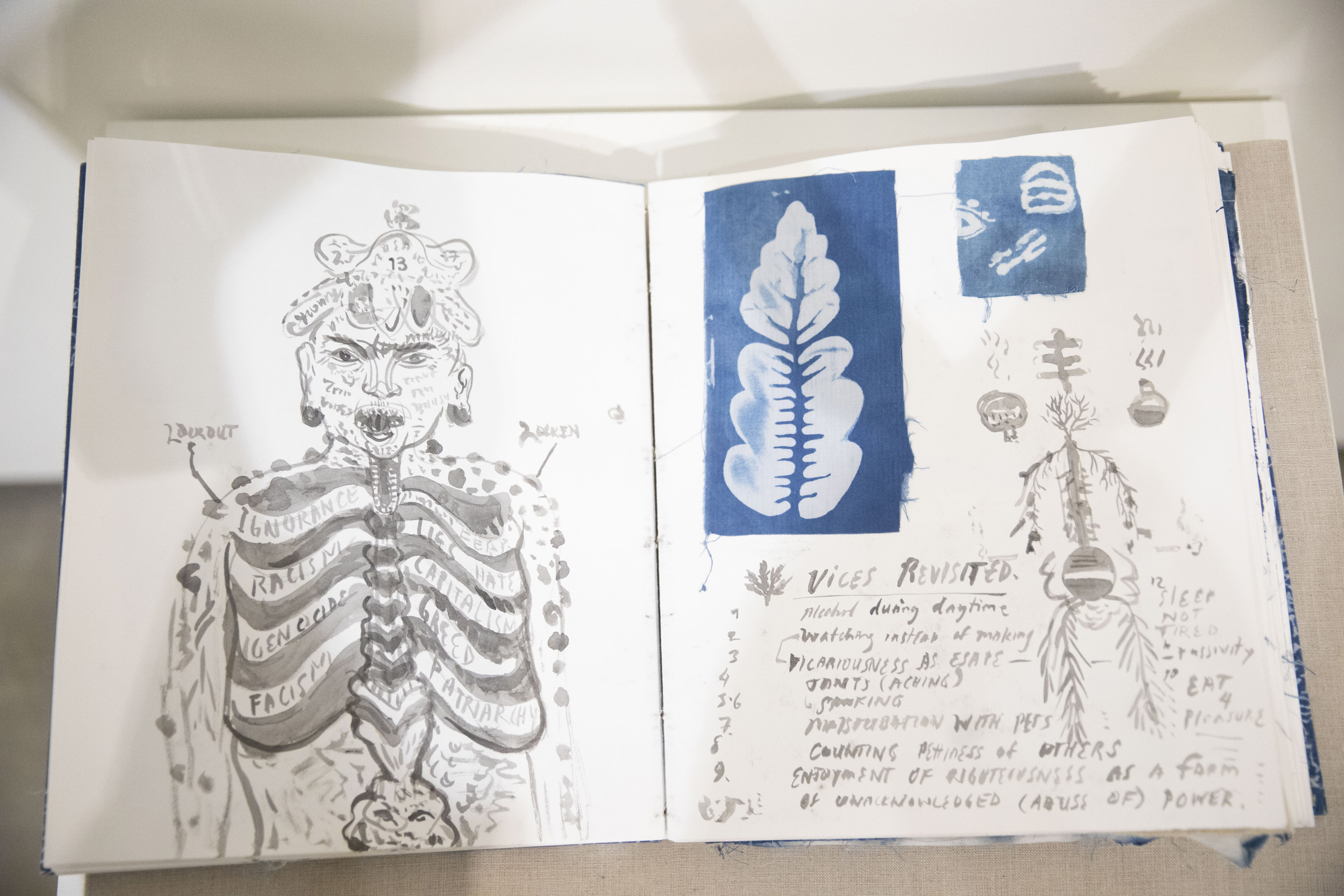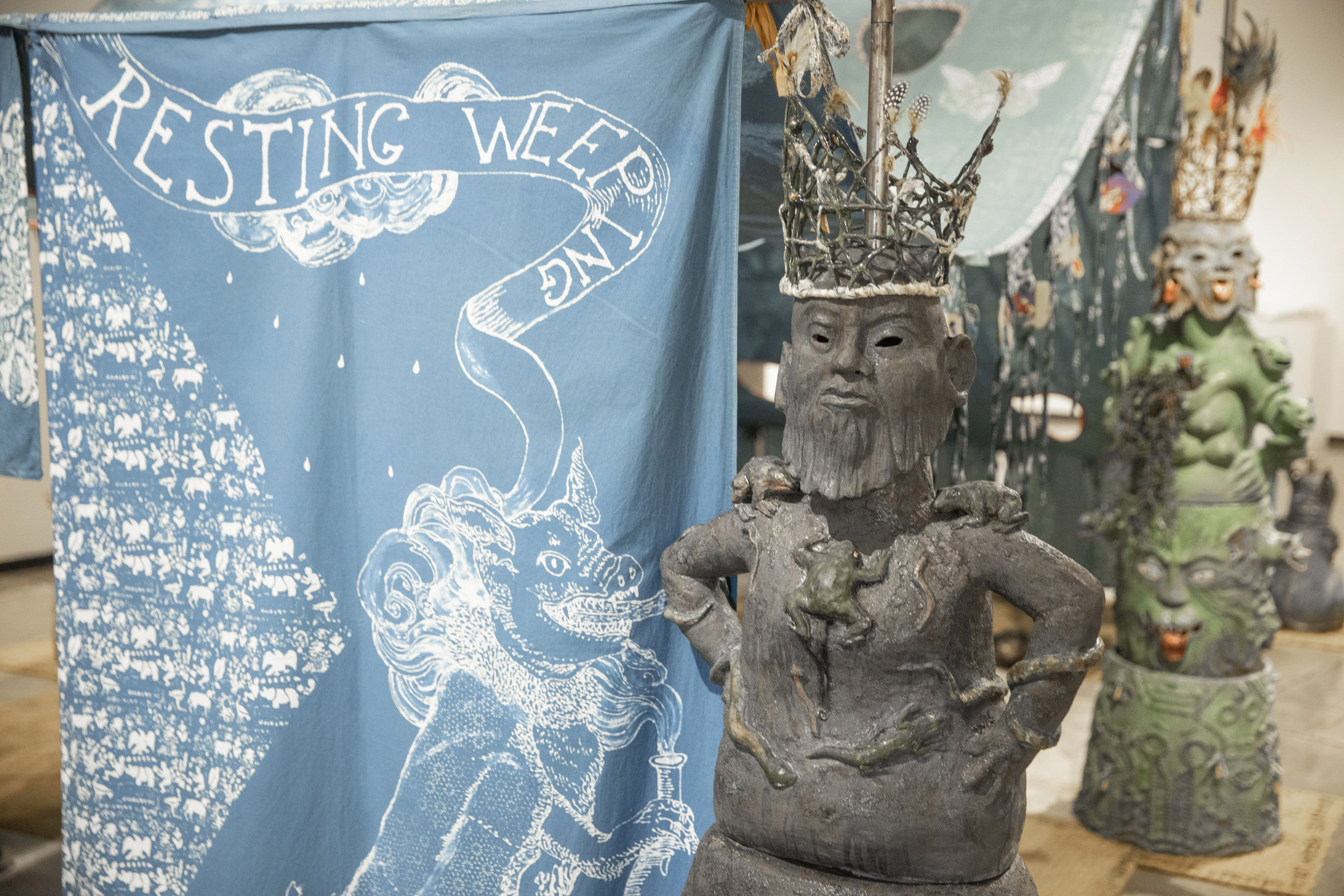Year of living pandemically

The multimedia exhibit, “Candice Lin: Seeping, Rotting, Resting, Weeping,” on pandemic isolation opens at the Carpenter Center.
Photos by Kris Snibbe/Harvard Staff Photographer
Multimedia exhibit ruminates on experience of isolation, anxieties over intimacy, climate change, and colonialism
In its first public program in nearly two years, the Carpenter Center for the Visual Arts has mounted Candice Lin’s immersive “Seeping, Rotting, Resting, Weeping,” a multimedia exhibition that pays specific attention to the experience of isolation during the pandemic.
Lin, who is based in Los Angeles, is known for her deep research into artmaking materials, craft methods, and cultural touchstones as well as her use of textiles, dye, ceramics, video animation, drawing, and many other practices to create installations. “Seeping, Rotting, Resting, Weeping” uses these craft forms to engage with anxieties of the pandemic, intimacy, climate change, and colonialism.
“With this project, Lin coaxes viewers into the artist’s position, asking them to engage in a similar kind of tactile exploration as a means to relearn, after a year of isolation, the ways in which physical proximity and haptics produce unexpected (and often pleasurably destabilizing) relationships to both knowledge and other people,” Dan Byers, John R. and Barbara Robinson Family Director at the Carpenter Center and a lecturer on Art, Film, and Visual Studies, wrote in an essay for the exhibition catalogue.
In one room, a video called “Millifree Work Weary Free Video (Qi Gong)” shows a “cat demon” — one of many that appear across the exhibition — leading qi gong movements against a stark, rocky backdrop following an earthquake. Like so many mobile exercise and mindfulness videos made popular during the pandemic, this one also features pop-up advertisements and spam texts, highlighting just how difficult it can be to relax in a screen-mediated world.


Combining ceramics, textiles, drawings, and other art forms, Lin layers her work with cross-cultural imagery discovered through her artistic and research processes.
In another space, ceramic animal statues surround a large indigo tent. Lin used indigo because of its historical associations with illness, the occult, and colonial trade routes. In keeping with earlier work utilizing extensive archival research, she hand-dyed, hand-printed, and drew on the panels using methods inspired by early 20th-century Nigerian adire cloths and traditional Japanese printing techniques.
“I sometimes feel like I am physicalizing elements that intrigue me from historical accounts, bringing them into a space where I — and others — can encounter them and renegotiate their meaning,” Lin said in an interview with BOMB magazine.
Lin also invites visitors to connect with her personal process, displaying a handmade book called “A Journal of the Plague Year (Cat Demon Diary).” It features drawings, fabric samples, and writing documenting the escalation of COVID and research for the exhibition in the midst of 18 months of deep uncertainty about the state of the world.
“‘Seeping, Rotting, Resting, Weeping’ is a teaching project,” wrote Byers. “On a fundamental level, it starts to walk us through the kinds of physically ‘interactive’ (a clinical-sounding word for a bodily mode many of us have forgotten) behaviors and skills that we all will need in order to re-emerge into, and remake, our post-pandemic worlds.”
“Seeping, Rotting, Resting, Weeping” runs through April 10. On Feb. 22 at 7 p.m. Lin will give a virtual artist talk with Diane Ahn, MIT Ph.D. student in history, theory, and criticism of art, and Carrie Lambert-Beatty, professor of History of Art and Architecture and of Art, Film, and Visual Studies. Registration required.




